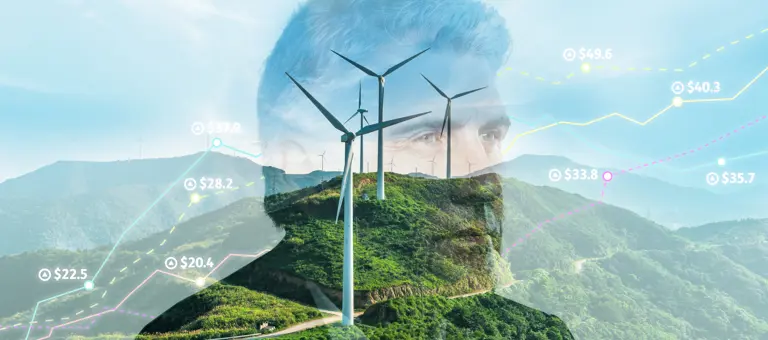
Financing the energy transition in a volatile market
7 min read 15 January 2024
This paper examines the recent disruptions that have affected the financing of renewable energy projects in Europe over the past 18 months. We argue that while there have certainly been some negative impacts, on balance, the market has shown real resilience and capital availability, per se, has not been a significant constraint to renewable deals getting down. Investors, overall, are positive about the long-term outlook for the energy transition.
For several years, the renewables sector has benefitted from low financing costs, ample liquidity, rapid product development, competitive supply, broad policy support, and declined LCOEs. Rapidly rising renewables penetration in Europe has been the result.
While annual investments have continued to grow globally - at a compound annual growth rate of 8.5% over 2013 - 2022 - renewable energy costs decline dramatically during this period. A dollar invested today now translates into higher capacity installed than it did in the past due to falling costs. For instance, between 2013 and 2021 the global weighted average of total installed costs for solar PV, onshore wind and offshore wind came down by 69%, 33% and 45% respectively.
Of course, material barriers such as slow permitting processes and grid constraints existing then as they do today. But, on balance, the recent past was a benign environment, broadly supportive of renewable expansion.
Read the full article in the link below.
Is digital and AI delivering what your business needs?
Digital and AI can solve your toughest challenges and elevate your business performance. But success isn’t always straightforward. Where can you unlock opportunity? And what does it take to set the foundation for lasting success?



